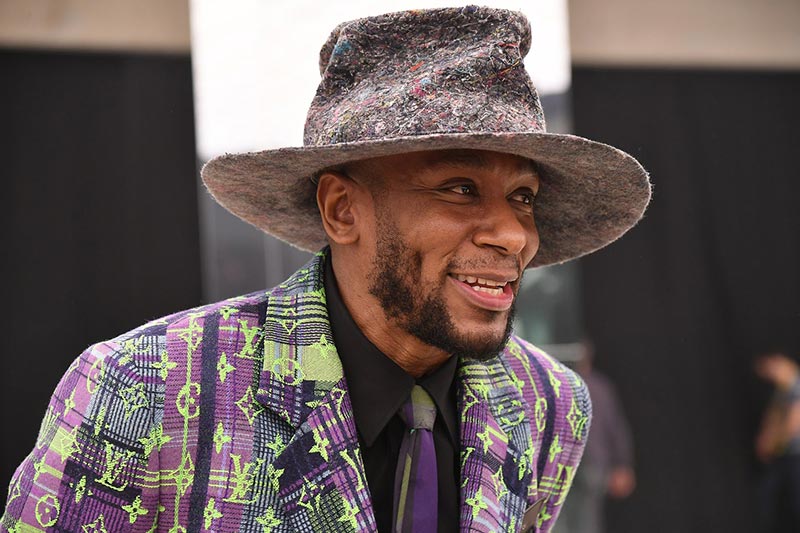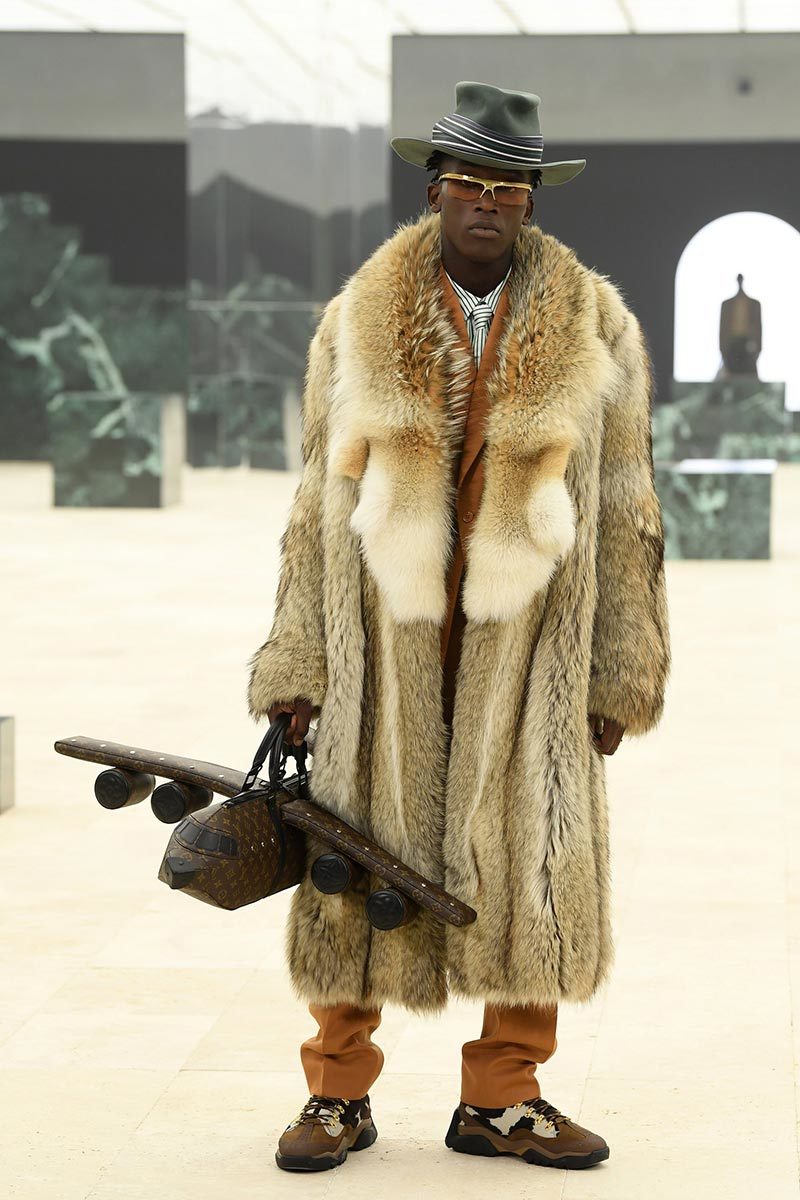For nearly a year (one which feels like an eternity), fashion weeks have been on extended hiatus: no catwalks, no audiences, no front rows. Instead: an endless schedule of videos and livestreams—perhaps the best of which, today, showcased Louis Vuitton’s autumn/winter 2021 menswear collection.
Directed by Wu Tsang, Virgil Abloh managed to simultaneously channel the energies of heist films, runways and music videos to debut his latest offering. Here’s what you need to know.

1 / 5
It riffed on the idea of an art heist
Virgil Abloh is no stranger to accusations of theft. “Provenance is reality; ownership is myth,” he said in September about his spring/summer 2021 collection, which explicitly addressed the theme. “What is the elephant in the room? What are the residual effects of colonialism?” This season, he took things one step further by presenting his collection through a film that loosely adopted the narrative of an art heist to explore “the myths spun by society around origin and ownership of art, visual references and those who create.” Drawing on James Baldwin’s essay Stranger in the Village—a reflection of Baldwin’s oft-alienating experience of living in Switzerland as an African-American—he was articulating a pretty direct point: that within white-washed Eurocentric contexts, certain cultures and histories are regularly “unrecognised or misunderstood.”
Ghanaian Kente cloth rendered in Scottish tartan; leathers laser-cut into the illusion of woven checks; trompe l’oeil corduroy; pinstripes and plissé suggested haute couture embroidery. Within a collection that riffed on banality, nothing was quite what it seemed. Abloh clearly seemed to be telling us all to look a little closer, and with a little more precision.

2 / 5
The line-up was all-star
On that same subject, Kai-Isaiah Jamal’s poetry partially narrated one of the chapters of the film: “You know when all the girls used to take things for runways or ballrooms? It’s not stealing or robbing or looting, it’s stepping into a fantasy that shouldn’t be a utopia but just a living right,” they said. “I think as black people, and as trans people, and as marginalised people, the world is here for our taking—for it takes so much from us.” Point profoundly made (and, dressed as they were in a loose evocation of Malcolm X, beautifully too). Elsewhere, the protagonist in the film, the inimitable Saul Williams, recited an extract from his piece “Coded Language”; Mos Def performed a series of original tracks in what looked like the best-dressed music video of all time. At this stage in the game, it’s getting pretty tricky to conjure energy from a livestream—but, lord, this line-up certainly had it.

3 / 5
It depicted a “new normal”
Abloh is recurrently obsessed by childhood: his collections at Louis Vuitton have reimagined assorted utopias from a wilfully naïve perspective. “As children, our dreams and aspirations are personified by archetypes,” explained the show’s notes—and accordingly, it riffed on the aesthetics cultural paradigms from Wall Street businessmen (newspaper tucked under arm, coffee cup in hand) to travelling salesman; artists; architects. “Often, these characters are tied to societal presumptions of cultural background, gender, and sexuality,” they continued—but this is the new normal, and so they appeared liberated from those conventions both by casting and design (top line: there were shirts and skirts; Kente and tartan sashes; durags tucked under cowboy hats).
“Through the lens of progression, appearing ‘normal’ shouldn’t be a privilege; its dress codes shouldn’t be associated with the genetic make-up of certain human beings,” Abloh said—but, apt reflections on identity politics aside, the philosophy made for a banging collection. The designer has clearly found his groove with slick tailoring; those collegiate jacket and knits are sure to fly off shelves; his exceptionally indulgent, elongated outerwear presented a perfectly dramatic embodiment of executive realness. It’s impressive to see a collection that will so clearly appeal to conservative customers and hype kids alike. Abloh’s Vuitton: proudly offering something for everyone.

4 / 5
Architects were celebrated
Much has been made of Abloh’s lack of formal training—his degree is in architecture and civil engineering rather than fashion design. Here, he lent into that critique by transforming cityscapes into outerwear: “a literal embodiment of the fusion of Virgil Abloh’s education in architecture with his profession as a fashion designer.” The Eiffel Tower protruding from one’s shoulder might not be a likely contender for next season’s most beloved trend, but it certainly made for a runway spectacle.

5 / 5
And so were aeroplanes
In bygone times, Abloh was a particularly frequent flier: through the machinations of Instagram you’d regularly be able to observe him DJing on one continent at night, but working on another by the next morning (at one point, I remember him saying he was averaging six flights a week). Lockdown has us all grounded, but there was a point in the pandemic when he designed a plane for Drake which summarily went viral—and now, aeroplanes appeared as buttons on jackets, tie pins on shirting, intarsia knitwear or transformed into sculptural monogrammed bags. Show invitations came in the form of DIY balsa wood aircrafts—an homage to boyhood toys and folded paper planes which “know no artistic ownership.” But there was something charmingly resonant, too, about the idea of global citizenship their real life counterparts can offer. Perhaps, by the time this is all on shelves, travel will have resumed. But, whatever the scenario, cross-cultural pollination is embedded in the DNA of a new generation—and nowhere does it manifest more expressly than at Virgil’s Vuitton.
This article was originally published on British Vogue





